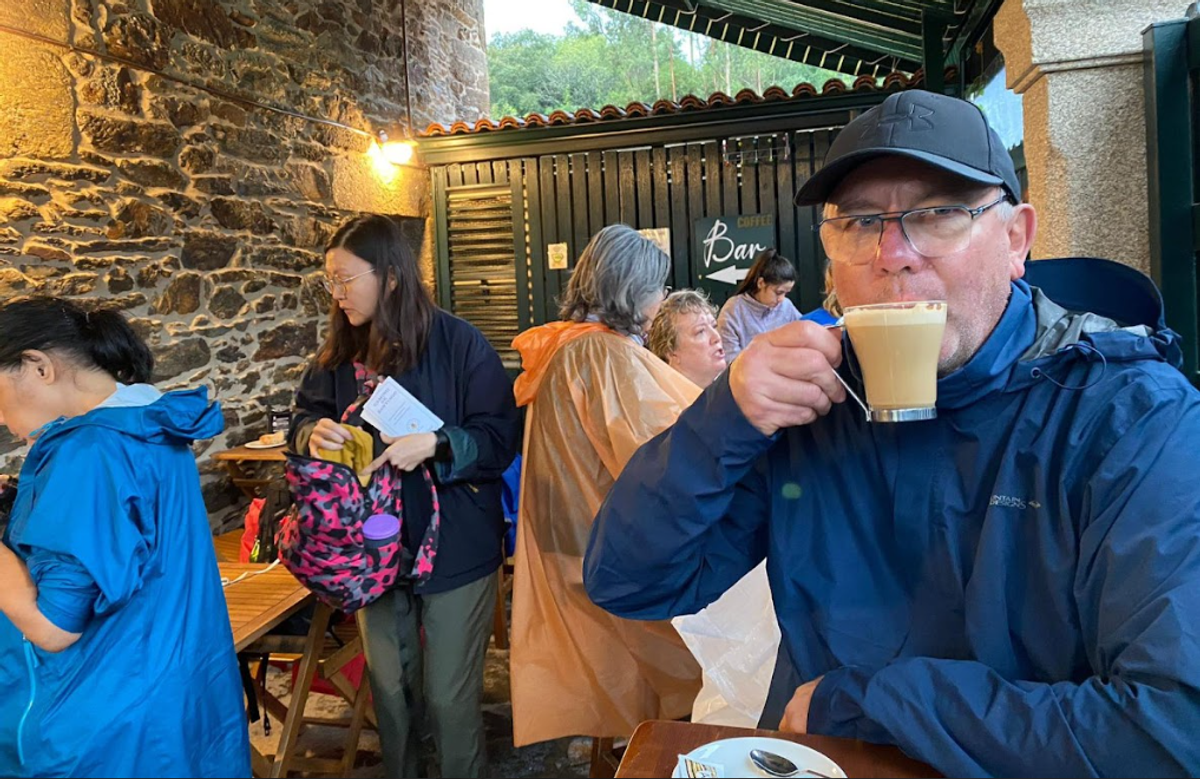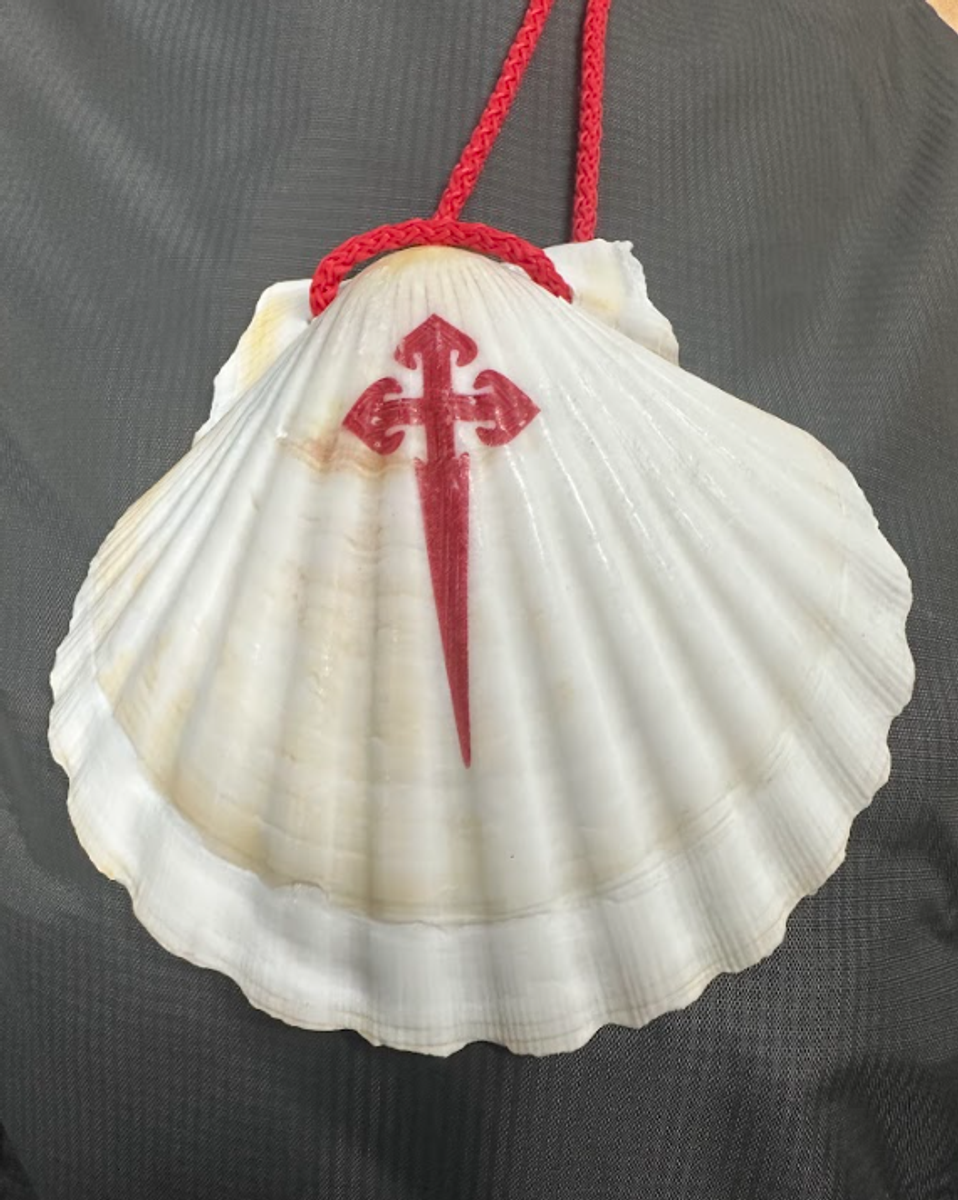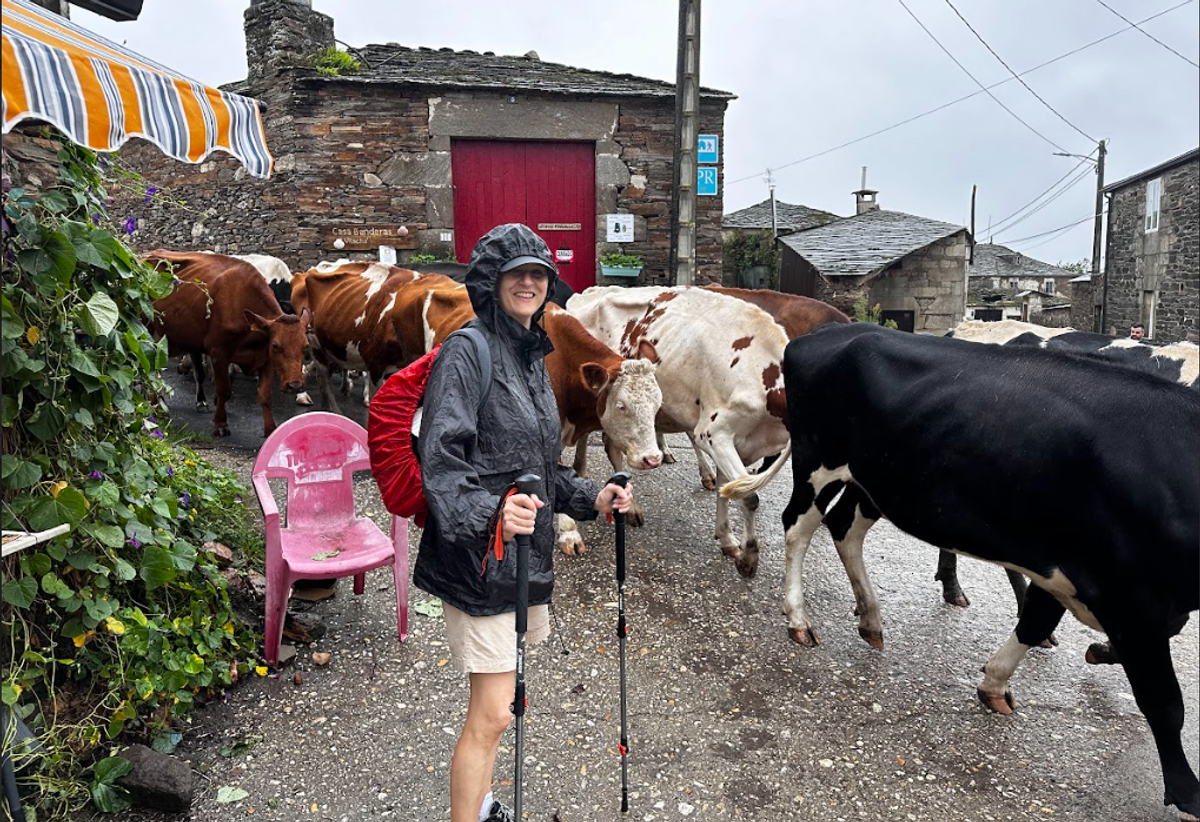Camino de Santiago

A number of weeks ago I returned from a pilgrimage, walking the Camino Frances in the north of Spain. With 22 other Catholic Principals (and many other pilgrims from all over the world), we walked the 117.3 km Camino from Sarria to Santiago.
On day one, armed with sunscreen and hats, we soon reached for waterproof jackets, umbrellas and ponchos as we commenced our walk in heavy rain. Throughout the 6 days (including one day of rest), the rain continued but rather than dampening our spirits, it added to the challenge and the sense of achievement. Encouraged by each other, we negotiated flooded pathways, gushing rivers and streams, whilst soaking in all that the Camino had to offer. Thankfully, we were also blessed with some fine weather.
The terrain and landscape changed constantly - we often found ourselves walking through fairytale forests or traipsing through medieval villages with local farmers herding stock, reminiscent of farming in years gone by. We were often greeted with sweeping farmland, with fields of corn as far as the eye could see. The terrain was never flat - thank God for our walking sticks.
Daniel, our Swedish/Spanish guide, encouraged us to acknowledge fellow travellers with the warm greeting, “Buen Camino” which loosely translated means, “May your path be good”. We walked with many other pilgrims from all corners of the world, all walking with a positive spirit and the same destination in mind. There were families (some spanning generations), young couples, elderly couples, groups of youths singing, dogs on leads, cyclists in groups … you name it, we saw it.
Like all walkers on the Camino, we had our Credencial - a passport of sorts which was stamped as evidence that you had completed sections of the route. The Credencial could be stamped at many places along the way, including medieval churches, shops, homes and humble cafes.
The final destination for our Camino was the township of Santiago de Compostela. It is believed that the remains of the Apostle St James the Great are at rest within the majestic Cathedral of Santiago de Compostela. James took on the role of a missionary after Jesus’ crucifixion and the subsequent rise of the Christian Church. Like many apostles, he embarked on journeys to spread the teachings of Jesus Christ. According to historical and ecclesiastical accounts, he travelled far and wide, even reaching modern-day Spain and Portugal to preach the Gospel. Though faced with adversity, his courage and determination never wavered. People believe James’ remains are interred in the Cathedral of Santiago de Compostela, a revered pilgrimage site. This site has become one of the most important pilgrimage destinations in the Christian world, attracting hundreds of thousands of pilgrims annually.
When we arrived at Santiago de Compostela, we gathered as a group and walked together into the square in front of the Cathedral of Santiago de Compostela (or the Cathedral of St James). We joined with many other pilgrims who had also finished their walk, taking the time to admire the amazing cathedral in front of us and reflect on what we had achieved - it was also a great photo opportunity.
The following day we joined many other pilgrims for Midday Mass in the Cathedral. Prior to the Mass we had the opportunity to visit the site where the remains of St James are interred. Towards the conclusion of Mass, the Botafumeiro – an enormous incense burner – was lit and swung from the ceiling, reaching across the length of the naves of the church and above the heads of all in the congregation. According to legend, the first temple censer was built for hygienic reasons during the eleventh century.
From Santiago we took a bus trip to Finisterre, one of the western-most points in Spain, which for some, is considered the final destination of the Camino. In medieval times, it was considered the end of the world and those who reached the Atlantic Ocean, collected a scallop shell as evidence that they had “made it”. The final destination was a time for forgiveness and renewal; a time to start again.
For us, it was a time of survival as we battled through Hurricane Kirk. On reaching Finisterre, we were greeted with calm conditions with the sun peeking through the gloomy clouds to welcome us. For me, this was a place to lay the shells that I had carried with me, each shell representing my family; and the small container of ashes, representing the St Justin’s Community (before leaving, I invited friends, including staff and Fr Andrew) to think of their dreams, hopes and prayers, and write their name on a piece of paper which I later burnt and carried with me in a small medicine container. They now rest at the base of the cross of St James on the coast of Spain.
The Camino de Santiago is more than just a popular route; it’s a globally cherished treasure. Since 1993, the Camino has been recognised as a UNESCO world Heritage Site.
Through sun, rain, storms, mud, hills, injuries, blisters and even a hurricane, our group sustained a genuinely positive, collegial and humorous demeanour throughout the Camino de Santiago. The recurrent theme throughout our pilgrimage was, “You never walk alone.” So, while we undertook the journey at our own pace, we often walked with friends/colleagues who travelled at a similar pace, often making acquittances with pilgrims from various corners of the globe who shared their stories.
For me the Camino is a strong reminder that we never walk alone - we are truly blessed by the ones that love us.






























